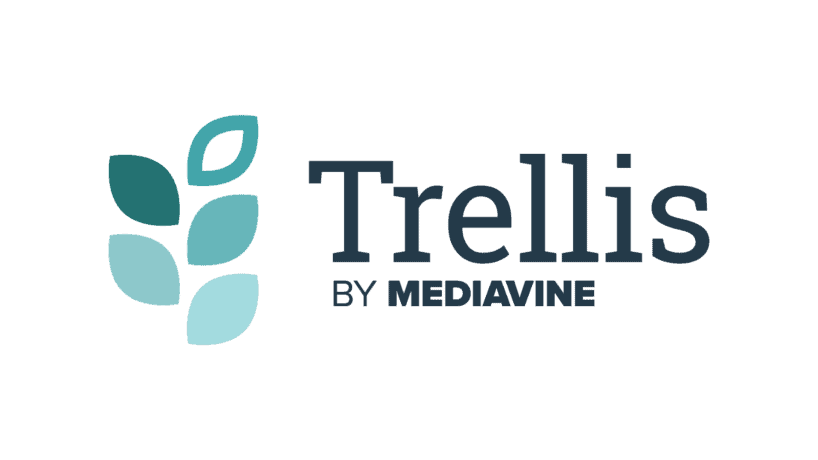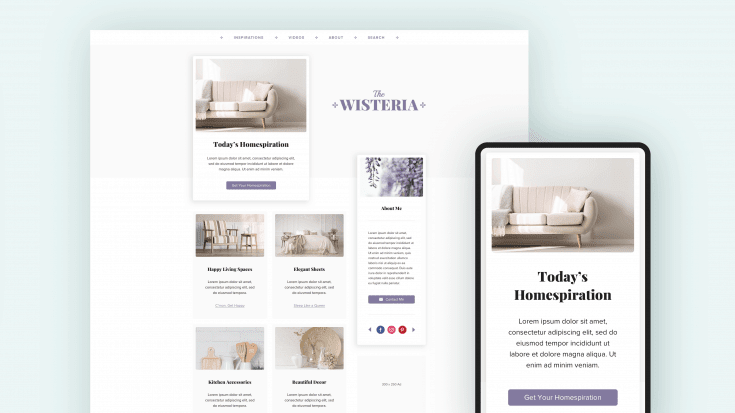Trellis: Built For Speed. For Content Creators. For the Future.


Updated 8/30/2021 – The Trellis Open Beta is now available to all! Turbocharge your WordPress site and conquer those Core Web Vital scores with the theme built for speed. Learn more or get Trellis now!
If you’re a Mediavine publisher, chances are you’ve noticed the recent ramp-up of the Trellis hype machine. While we’ve discussed this exciting product at length in our social channels (Check out our Trellis Facebook Live with Publisher Engineering Manager Jordan Cauley), and at our conference last week, we’ve yet to officially announce Trellis on our website.
Until now. That’s right, Trellis is going blog official!

Trellis is an open source WordPress theme framework, built with modern web technologies and designed for both site speed and revenue optimization.
Think of Trellis as a replacement for other popular theme frameworks such as Genesis.
Much like Genesis, the actual design and look of your website will be controlled by child themes that are built on the Trellis framework.
Trellis is being built in 2019. As such, it utilizes the best practices from the modern era, versus its nearly decade-old (!) competition.
Right out of the gate, Trellis is able to employ all of Google’s best practices for web development, without the technical debt of supporting years of themes built on it.
Trellis is also designed for Mediavine publishers.
We’re not trying to build a framework for the entire Internet. Genesis and similar frameworks try to do it all, and have everything from corporate to e-commerce sites built on them.
Trellis is designed for content creators.

Trellis is also built for speed.
Lighthouse, the tool powering Google PageSpeed Insights, is literally built into our development process. Every pull request, or code change, is run against Lighthouse using what’s called a CI, or Continuous Integration.
In short, Trellis is aiming for 100 scores on both desktop and mobile on PageSpeed Insights out of the box, and we ensure that any code changes we make won’t impact this.
In order to accomplish this goal, Trellis is going to do a lot more than what typically falls under the umbrella of a theme, or a framework.
Trellis uniquely combines many aspects that typically fall under plugins. In a sense, you can think of it as multiple plugins rolled into one.
For instance, Trellis will handle lazy loading of ALL images, from the ones in your theme to ones in your posts, using some clever tricks to avoid any jittering effects and resizing.
This efficient lazy loading of images will be fully compatible with Mediavine ads. Everything in Trellis is optimized with ad revenue in mind.
Trellis also handles the optimization of your JavaScript, CSS and Fonts, allowing you to avoid additional plugins for most of these things.
December 2020 Update: And now, thanks to the Trellis Images, which is included in your Trellis API, Trellis can also optimize your images and serve next-gen webp versions of your photos.
NOTE: You will still need an optimized host, a caching plugin, and a CDN.
Most other speed optimizations publishers run plugins for can be handed off to Trellis, though, and everything is designed to work seamlessly alongside Mediavine ads.
Another major Trellis bonus: We’ve ditched jQuery, an older JavaScript framework built for cross-browser compatibility that is common amongst WordPress themes.
In 2019, jQuery is much less important. As a large JavaScript library, it can negatively impact site speed since it loads synchronously before the rest of your JavaScript.
Trellis is leaving this roadblock in the dust.

The Marigold
While still somewhat of a lesser known project in the publishing community, the Google team is making a major push into Progressive Web Apps, or PWAs.
A PWA is effectively the ability to turn a regular website into its own mobile app using modern technologies such as service workers.
Trellis themes automatically implement a PWA for you, with the full “PWA Optimized” badge in Lighthouse, meaning your website becomes DOWNLOADABLE.
In other words, if a user visits your mobile site on an Android device running Chrome – they can be notified that they may download and install your app.
With a PWA, users can still access your site offline, or when the network is down. As a bonus, we’re able to use those same service workers to do additional speed optimizations.
Again, PWA is built into the Trellis core.
Mediavine is working with third parties to build Trellis child themes, some of which are currently for sale in the Trellis Marketplace, with more to come in the future.
These child themes are extremely lightweight and easily handle the styling of your site.
Our developers will help maintain all themes to ensure that as Trellis updates come out, all of the themes support the latest features and bug fixes.
The themes will be vetted for site speed and designed to work in harmony with Create and other Mediavine future plugins, all while optimizing your revenue.

The Wisteria
While the site speed and PWA aspects of Trellis are exciting, they don’t pay the bills. Ads are just the beginning at Mediavine, but they are vital to everything we do. To the point:
Trellis Marketplace themes will be built with optimized ad placements ready to go.
Switching Trellis Marketplace themes? No need to even alert our team – it all happens through a seamless integration between the Mediavine Script Wrapper and Trellis.
Even better, Trellis Marketplace themes will provide custom ad experiences.
For example, we’re going to have in-feed native ads on a website’s homepage and any WordPress “loop” pages such archives, tag and category pages.
Use a theme that effectively pays you back.
Trellis is currently in testing on live production sites today.
However, the plan is to have an extended beta period, so we know Trellis is compatible with as many plugins and hosts as needed before we can open this product up.
We also need to guarantee that when supporting this product, we can maintain the high quality and prompt responses Mediavine prides itself on, which means a slower rollout.
During the beta period, the initial focus will be on the Marketplace, where we can control the child themes to make sure we’re working out all bugs and plugin conflicts for you.

In order to maintain the insane speed of Trellis, you’re going to need plugins that are optimized for site speed – ones that don’t rely on jQuery, and have optimized, minimal JavaScript and CSS.
The good news is that right off the bat, Create will be optimized for Trellis and will have little to no impact on your site speed. But we know publishers are going to run other plugins, too.
Trellis’ extended beta period will allow us to work with third-party plugin developers, making them focus on pagespeed so they’re optimized for Trellis as well.
Of course. Trellis will be open source, which means anyone can run it. Even the Marketplace will eventually be open to non-Mediavine publishers.
However, during the beta period, Trellis will first be offered to Mediavine publishers, with whom we have existing relationships, and who can help us test the product.

Trellis is a framework designed for people to build on, and without fail, it will support custom child themes built by your developers and designers.
Again, the beta is focusing on the Marketplace themes.
We want to work out a stable API, or application programming interface, for developers on our own child themes before we have people building on this.
The last thing we want is custom sites to break as we change things up with Trellis during the early development stages. As things get more stable with the Marketplace tests, we will be working with developers on custom themes.

A quick list of steps you can take to prepare for Trellis:
Stay up to date with the latest from Mediavine
If you’re a developer building WordPress sites for content creators, this Case Study featuring our WordPress framework, Trellis, is for you! We created Trellis for the publisher who is an …
 Eric Hochberger
Eric Hochberger
We’re thrilled to announce that Mediavine won the Innovation Award for our work on Trellis and Core Web Vitals at the 2021 Google Certified Publishing Partner (GCPP) summit this month. …
 Eric Hochberger
Eric Hochberger
They say the best things in life are worth waiting for. I couldn’t tell you who “they” are … or if they really do say that, honestly. But it sounds …